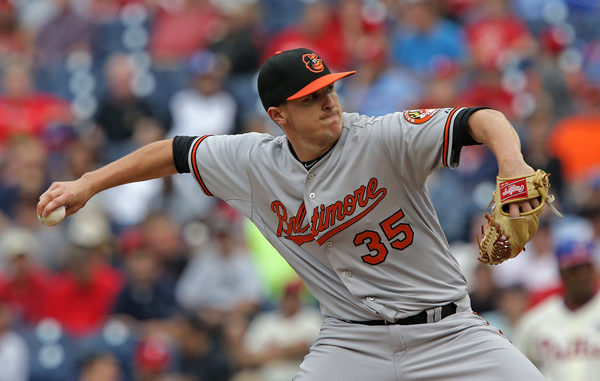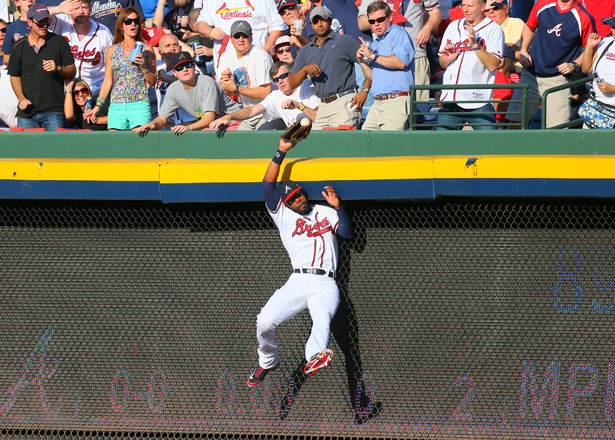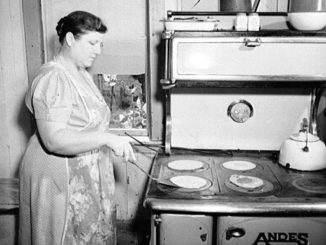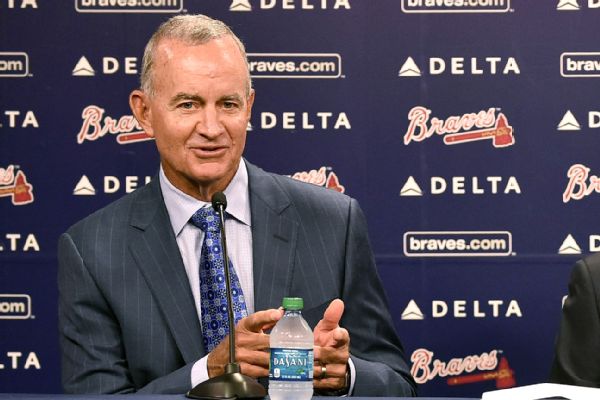
7/26/18: Tampa Bay Rays traded LHP Jonny Venters to Atlanta Braves for Future Considerations.
7/30/18: Baltimore Orioles traded RHP Brad Brach to Atlanta Braves for Future Considerations.
I just got back from a vacation where I purposefully unplugged from the goings-on of professional sports. Other than check scores, I largely stayed away from the phone. Before I left, I sent this tweet:
https://twitter.com/K26dp/status/1021842071441813504
If I was sure about anything about this trade deadline, it was that the Braves would certainly add one, possibly two veteran relievers to help the struggling bullpen and that they would have to dig into their prospect reserve in order to do it, so my tweet was sent more-or-less tongue-in-cheek. That said, trading prospects for relievers wasn’t something I was keen for the organization to do. Relievers are largely volatile assets that gain or lose value season-to-season on the basis of very small samples of performance. Prospects of course do the same thing, but given that I spend a good chunk of my time watching and writing about prospects rather than major league relief pitchers, you can probably guess that my preference would be against making a big splash for relievers.
That said, the major league bullpen had to have reinforcements. The squad that had overachieved through the first two months has come crashing down hard, with a collective 4.82 ERA and -0.2 fWAR in the month of July.
While A.J. Minter, Shane Carle, and Jesse Biddle have largely held their own, Arodys Vizcaino has joined Jose Ramirez on the shelf and he may be there for a good long while.
Dan Winkler, the Braves best reliever for almost a half a season, has suddenly become a lot more hittable.
Luke Jackson, handed a major league contract after a couple of strong outings in late June, has turned back into… well, Luke Jackson.
Rookie Evan Phillips has struggled with his first taste of the majors, following a pattern of initially struggling each time he has advanced a level. The veteran he essentially replaced, Peter Moylan, has been spotty all season, even in the right-handed specialist role that he fulfilled admirably for Kansas City last season.
Left-hander Sam Freeman has seem to have become a lightning rod of fan ire after several high-profile middle inning blown saves, and he owns a 7.11 ERA for the month while also appearing in the most innings.
The Reinforcements
Jonny Venters
Into this mix steps two relievers with impressive histories, but also with some questions.
The first trade was for a pitcher extremely familiar to Braves fans, left-hander Jonny Venters, who for the first three years with Atlanta, from 2010-12, was one of the top relievers in baseball, and formed with Billy Wagner (in 2010), Craig Kimbrel, Eric O’Flaherty, and Peter Moylan the core of perhaps the best sustained run of relief pitching the Braves had ever had.
Venters then endured a torn UCL before the 2013 season and had to have Tommy John surgery, which was his second of his career after having the procedure done while he was a minor leaguer. While rehabbing from this, the replacement UCL tore in 2014 before he could get back to the majors, and he had to have a third Tommy John surgery.
No player had ever come back to the majors after three Tommy John surgeries, and the Braves waived him after that season. He signed a minor league deal with Tampa Bay, but continued to endure setbacks, including having to have a fourth surgery in the elbow in 2016 to reattach the UCL ligament to the bone.
In April of this year, Venters and the Rays patience finally payed off when he was called up and pitched in the majors for the first time in six seasons.
Venters appeared in 22 games for Tampa Bay, pitching to a 3.86 ERA, but holding left-handers to a .148/.258/.259 batting line against him. Now he’s back with the team that drafted him.
"My head was spinning."
Jonny Venters is back in a @Braves uniform. Today is a good day.#Braves | #ChopOn pic.twitter.com/1r2HzXngwr
— Bally Sports: Braves (@BravesOnBally) July 27, 2018
Sorry, it’s a little dusty in here.
Obviously the main concern with Venters is the continued stability of his left elbow, and manager Brian Snitker will need to be very careful about overuse. However, on a team with two left-handed relievers with reverse-split tendencies and a manager that has mostly used them like left-handed specialists anyway, getting a true left-handed specialist like Venters is a fantastic move by the Braves front office. Venters still relies heavily on his sinker, a pitch that he no longer throws in the upper-90s but that he still uses to good effect to generate a 68.2% groundball rate.
That they got him for reportedly the cost of only international bonus pool space makes this deal a small coup for Atlanta.
Venters will be a free agent this offseason at the age of 34.
Brad Brach
Not nearly as well-known as Venters to Braves fans is former Padres and Orioles right-hander Brad Brach (pronounced like brock).
Brach was a 42nd-round draft pick by the Padres in 2008 (and with 6.2 bWAR to date in his career, he is the most successful player to sign as a 42nd round pick in major league history). He was essentially a major-league average reliever for the Padres in parts of the 2011-13 seasons. After the 2013 season, the Padres ended up designating him for assignment while trying to navigate a 40-man roster crunch, and the Orioles scooped him up off waivers.
Brach flourished in Baltimore, pitching to a 2.74 ERA in 246 appearances from 2014 through 2017 and making the All-Star team as a middle reliever in 2016 when he had his best season, a 2.05 ERA in 71 games.
This season the results haven’t been up to that level however, and he’s posted a 4.85 ERA in 42 games (39 IP) with the Orioles, largely fueled by an uptick in walks and questionable defense behind him.
Brach relies on a heavy mid-90s fastball that he traditionally has located very well. He backs that up with an excellent change-up that mimics the arm motion and action of the fastball but generally comes into the zone about 8 mph slower. Brach also has a slider that has traditionally been more of a third pitch but has been his most effective offerning this season.
There is strong reason to believe that going from the Orioles, with perhaps the worst team defense in the majors this season, to the Braves with one of the best this season could help him right the ship of this season, but Brach will need to go back to pitching more in and around the zone with his fastball and change-up while generating weak contact and strikeouts.
Like Venters, Brach is a free agent after this season. Also like Venters, Brach was obtained for only international bonus pool space, a fantastic trade in part because it was unlikely that the Orioles medical staff would find anything during the bonus pool’s physical.
Brad Brach used his frisbee Slider to get a big out against Wellington Castillo on Sunday pic.twitter.com/BDD5SkU8ea
— Nick Pollack (@PitcherList) September 27, 2016
The Braves are still mentioned in almost every trade rumor, and likely will up through the trade deadline tomorrow at 4:00 PM ET. Those same rumors indicate the Braves are reluctant to deal their top prospects for anything other than controllable players, which is in my opinion a smart inclination.
Also, even if a trade does not occur by the deadline, there has been many impact trades made after the deadline. August trades have included Justin Upton going to the Angels in 2017, the Blue Jays adding key starter David Cone in 1992 for their ultimately successful World Series run, and the Tigers picking up veteran starter Doyle Alexander Atlanta in 1987, who helped Detroit win the AL East in exchange for some minor league guy named John Smoltz.




My understanding is that Venters is under team control next year as well. Since he hasn’t hit service time requirements yet.
I would have to count the days. Time spent on a major league DL accrues service time, but I’m not positive on whether his contracts with TB were full MLB deals.
Three separate outlets have him at 5.00 years MLB service time entering 2018, so it depends on his DL stints and callup in 2018, it seems.
Good catch, and we’ll dig deeper for clarification.